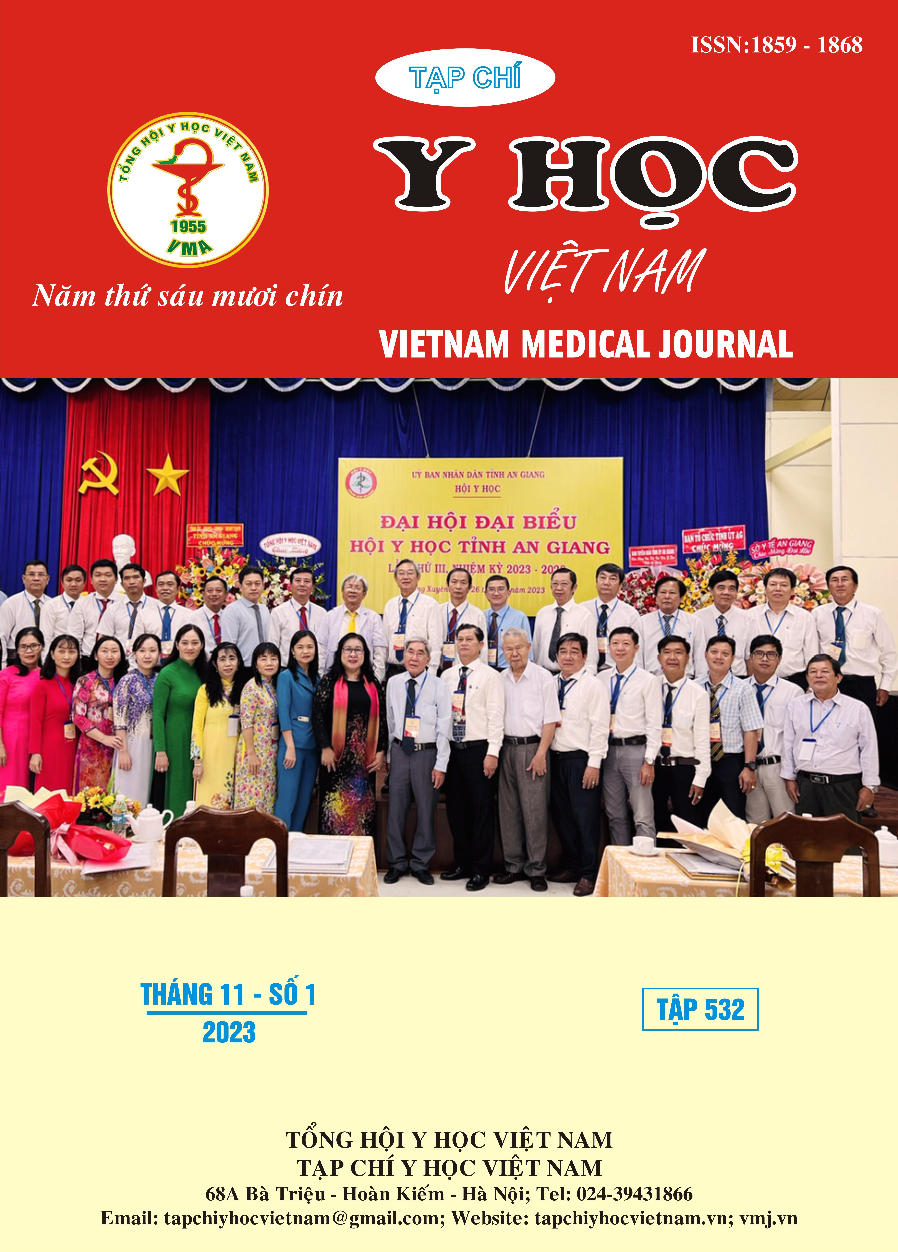SKIN AGING RISK FACTORS AT NATIONAL HOSPITAL OF DERMATOLOGY AND VENEREOLOGY
Main Article Content
Abstract
Objective: To investigate the factors related to skin aging at the National Hospital of Dermatology. Methods: A cross-sectional descriptive study was conducted on 150 aging skin subjects at the National Hospital of Dermatology from July 2021 to October 2022. The collected information included gender, age, skin type according to Fitzpatrick classification, degree of skin aging according to Glogau classification, clinical features of skin aging according to SAS scale (Skin aging scale), Related factors including duration of sunlight exposure, stress level, sunscreen use habits, lifestyle behaviors (exercise, coffee drinking, tea drinking, smoking, staying up late,...). Results: There were 150 subjects including 69 males and 81 females, with a mean age of 40,59 ± 9,37 years old. There was no difference in mean SAS scores between groups with different times of sunlight exposure, sunscreen use, exercise frequency, coffee drinking, tea drinking, smoking, stay up late at night (p>0,05). There is a difference in mean SAS between the groups of subjects with different stress levels (p<0,05). Women have significantly higher wrinkles and sagging skin – sagging than men. Conclusion: Stress aggravates skin aging. Wrinkles and sagging skin is higher in women than in men. It is necessary to conduct research with a larger sample size to conclude the relationship between skin aging and other factors: sun exposure, sunscreen, and living habits...
Article Details
Keywords
Skin aging, risk factors.
References
2. Rexbye H, Petersen I, Johansens M, Klitkou L, Jeune B, Christensen K. Influence of environmental factors on facial ageing. Age Ageing. 2006; 35(2): 110-115. doi: 10.1093/ ageing/afj031
3. Zannas AS, Arloth J, Carrillo-Roa T, et al. Lifetime stress accelerates epigenetic aging in an urban, African American cohort: relevance of glucocorticoid signaling. Genome Biol. 2015;16:266. doi:10.1186/s13059-015-0828-5
4. Oyetakin-White P, Suggs A, Koo B, et al. Does poor sleep quality affect skin ageing? Clin Exp Dermatol. 2015; 40(1): 17-22. doi: 10.1111/ ced.12455
5. Helfrich YR, Yu L, Ofori A, et al. Effect of smoking on aging of photoprotected skin: evidence gathered using a new photonumeric scale. Arch Dermatol. 2007; 143(3): 397-402. doi:10.1001/archderm.143.3.397
6. Chaikul P, Sripisut T, Chanpirom S, Ditthawutthikul N. Anti-skin aging activities of green tea (Camelliasinensis (L) Kuntze) in B16F10 melanoma cells and human skin fibroblasts. European Journal of Integrative Medicine. 2020; 40:101212. doi:10.1016/j.eujim.2020.101212
7. Crane JD, MacNeil LG, Lally JS, et al. Exercise-stimulated interleukin-15 is controlled by AMPK and regulates skin metabolism and aging. Aging Cell. 2015; 14(4): 625-634. doi: 10.1111/ acel.12341


